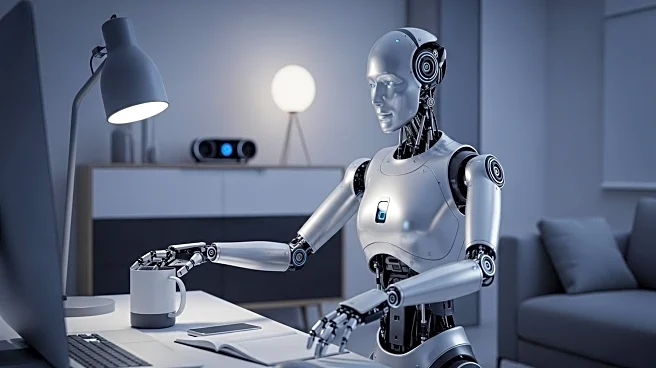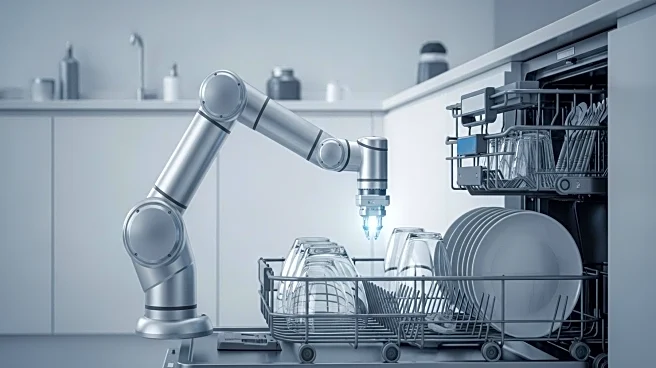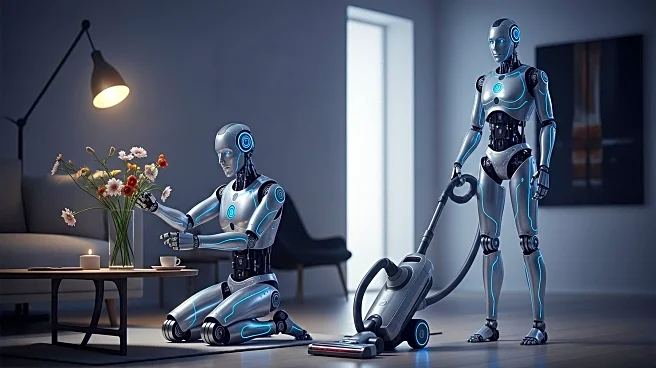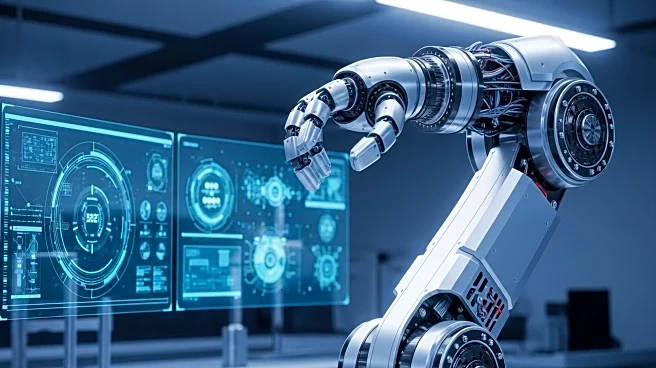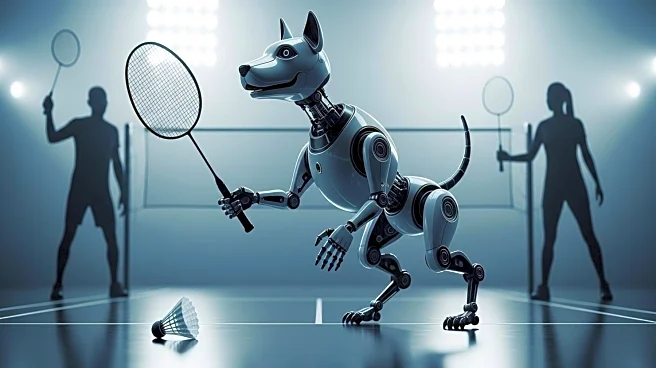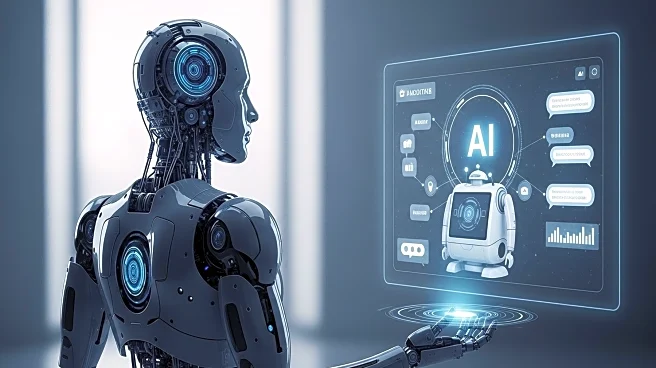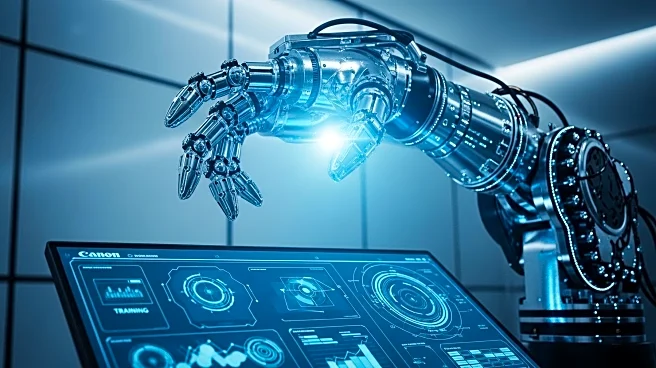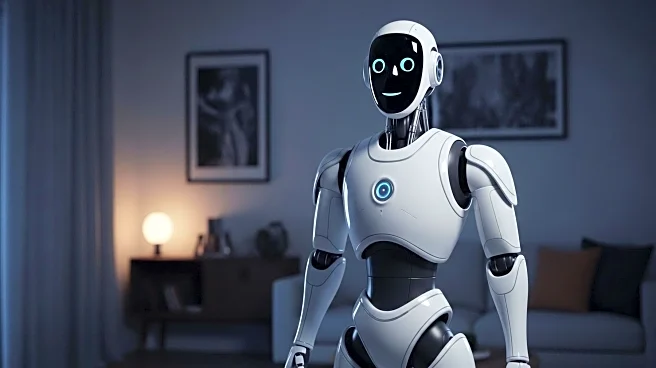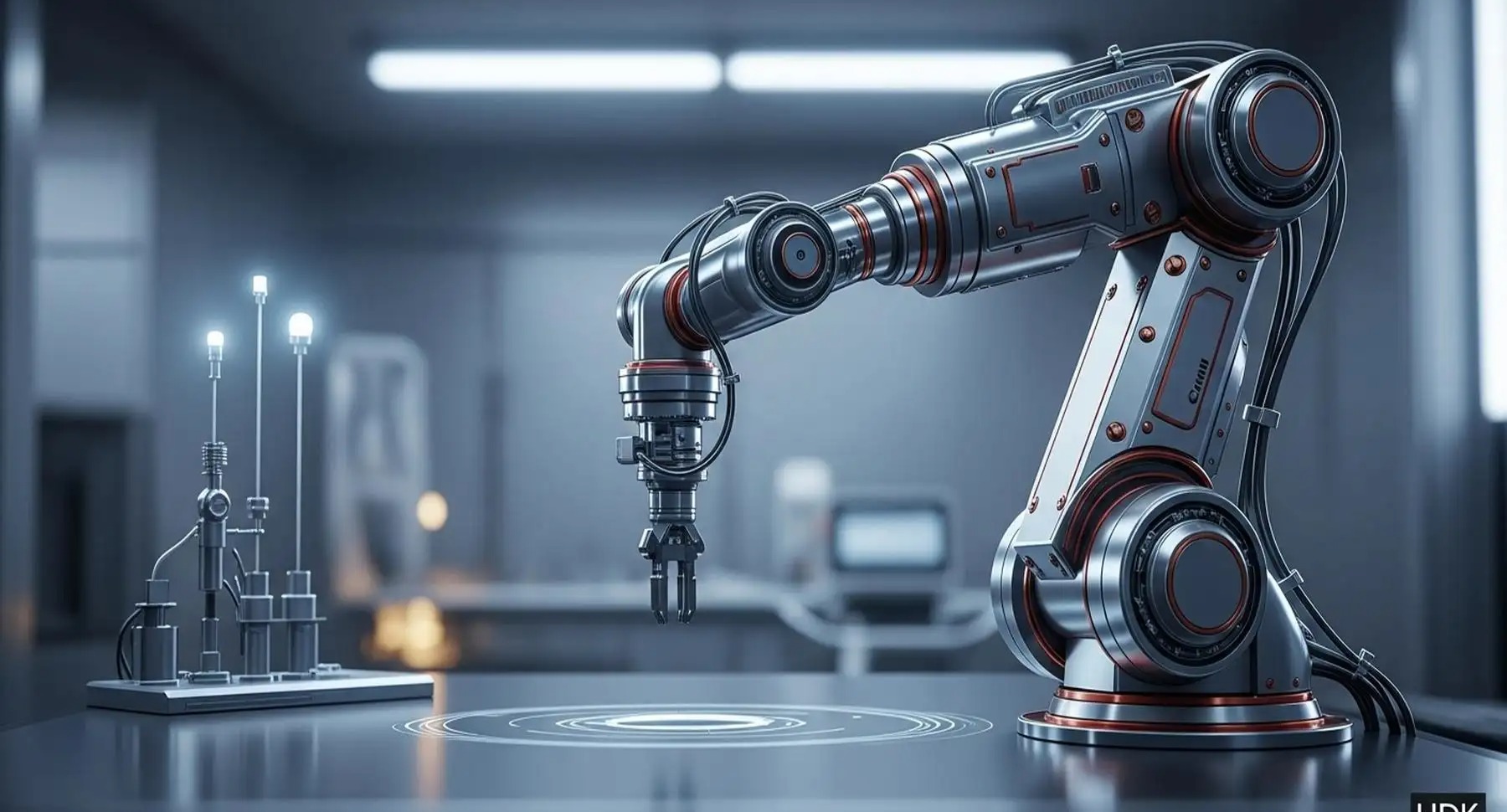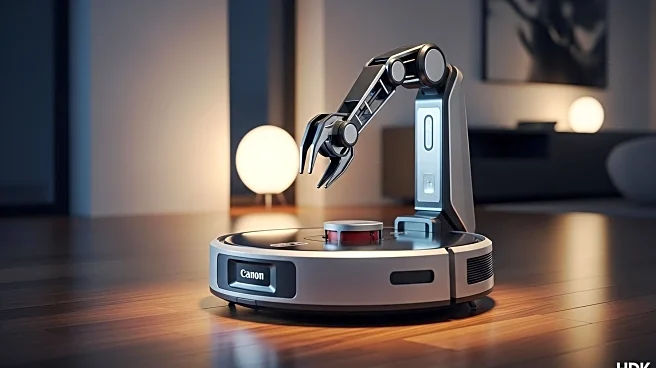What's Happening?
Figure AI has showcased its humanoid robot, Helix, which is capable of performing complex household tasks such as loading a dishwasher. The robot uses a Vision Language Action (VLA) model that allows it to adapt to various real-world challenges by learning from new data. This model enables Helix to handle tasks that require precision and adaptability, such as singulating stacked plates, reorienting glasses, and recovering from errors like misgrasps. The demonstration highlights the robot's ability to perform tasks without the need for new algorithms or special-case engineering, showcasing its potential for broader applications.
Why It's Important?
The development of humanoid robots like Helix represents a significant advancement in robotics technology, with potential implications for various industries. By demonstrating the ability to perform complex tasks autonomously, these robots could revolutionize household management and logistics, reducing the need for human intervention in routine tasks. This could lead to increased efficiency and cost savings in industries such as hospitality, healthcare, and manufacturing. Additionally, the ability to learn and adapt to new tasks without extensive reprogramming could accelerate the integration of robotics into everyday life, potentially transforming the labor market and societal norms around work and productivity.
